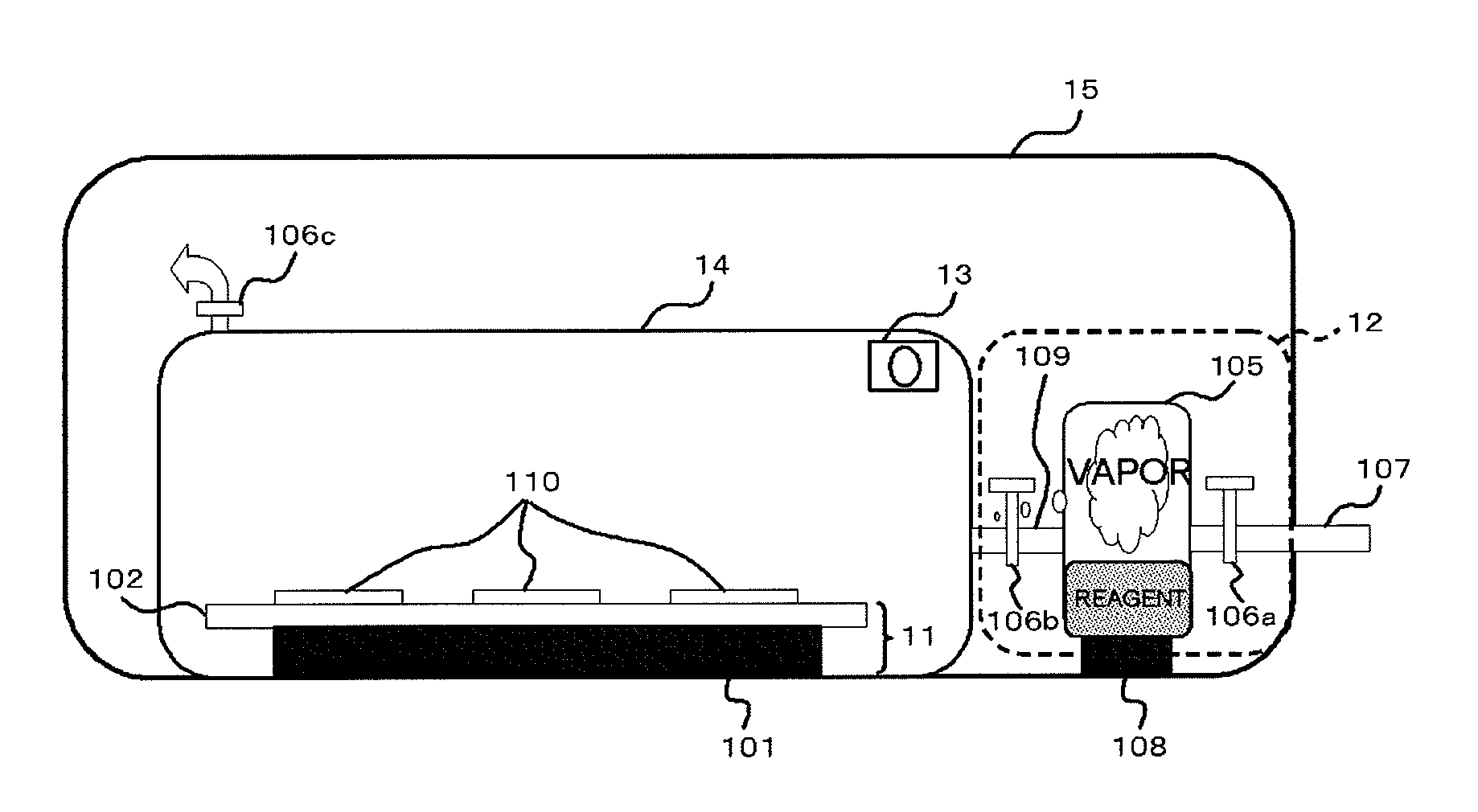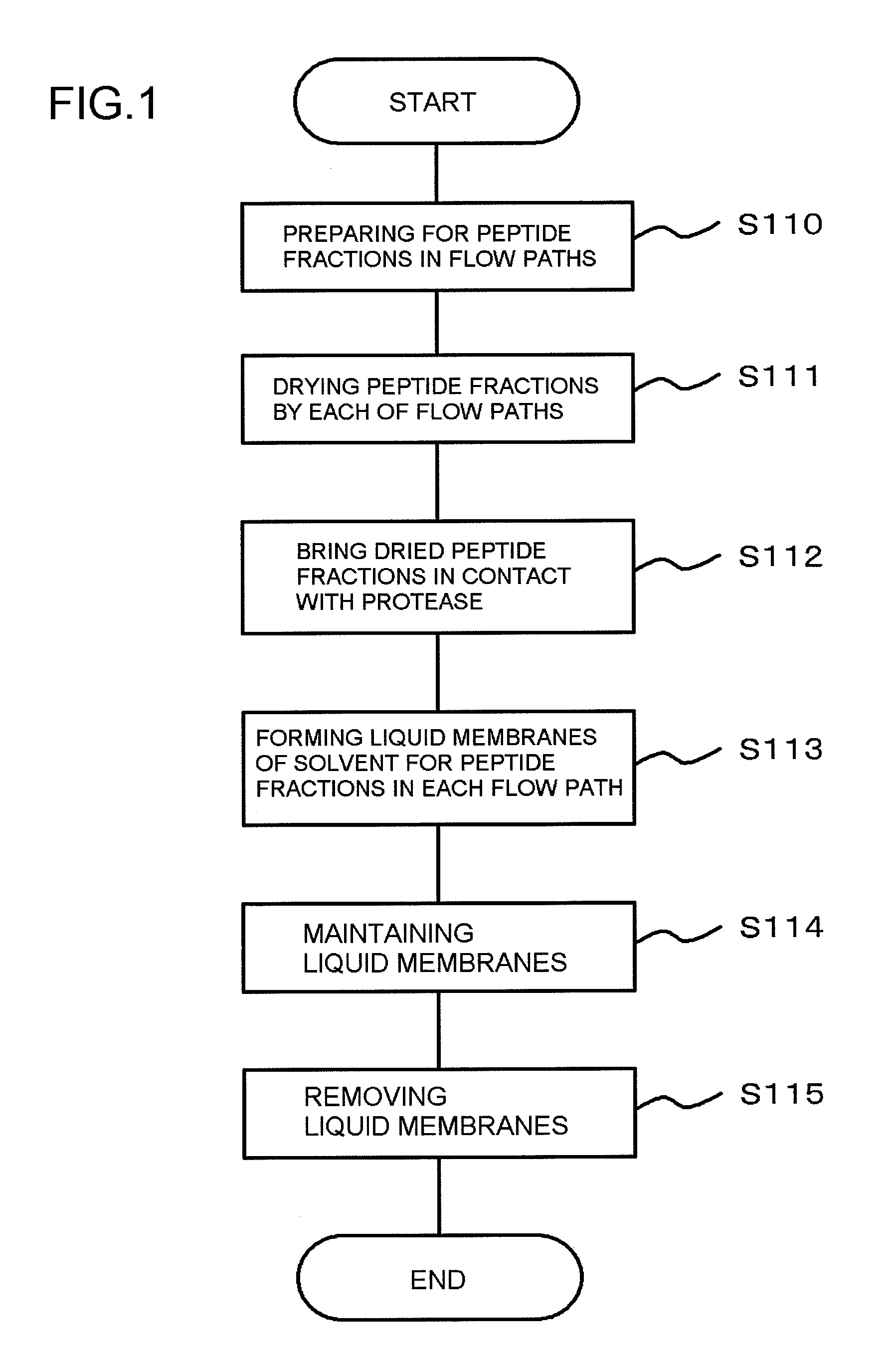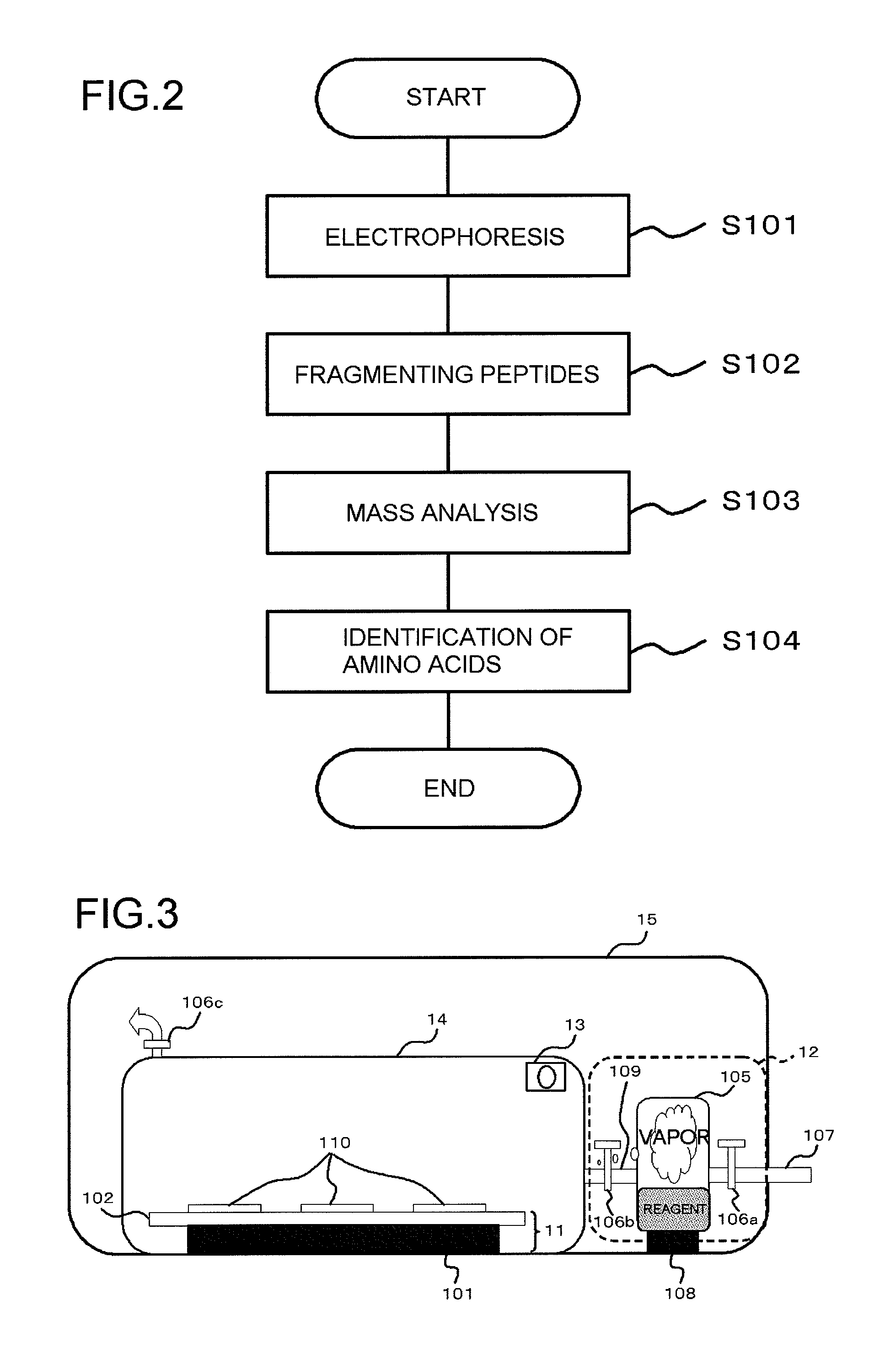Method for degrading peptides, method for analyzing peptides, device for degrading peptides and device for analyzing peptides
- Summary
- Abstract
- Description
- Claims
- Application Information
AI Technical Summary
Benefits of technology
Problems solved by technology
Method used
Image
Examples
example 1
[0126]For the purpose of studying an effectiveness of the present invention, commercially available equine apomyoglobin or bovine carbonic anhydrase was introduced into flow paths by employing a chip for isoelectric focusing. Subsequently, a freeze-dry process was conducted to prepare dried protein. A trypsin solution (water: acetonitrile=3:7, ammonium hydrogen carbonate 0.5 mM) was sprayed over the thus obtained dried protein in the flow path, and the chip for the isoelectric focusing was previously heated to 80 degrees C. This operation allowed rapidly drying the solvent, preparing a protein / trypsin dried mixture in the flow path. A proper amount of water vapor was supplied over the obtained protein / trypsin dried mixture to avoid a diffusion of the reaction product while promoting the enzyme reaction.
[0127]In the present example, equine apomyoglobin and bovine carbonic anhydrase were employed for the analysis targets. Then, the protein was introduced in the flow path utilizing the...
example 2
[0137]For bovine carbonic anhydrase, approximately 5% in the gross quantity of bovine carbonic anhydrase was dyed with commercially available Cy3 fluorochrome (commercially available from GE Healthcare), and then was introduced into a flow path of a chip for the protein isoelectric focusing. A voltage was applied to converge into an isoelectric point, and then a freeze-dry process was conducted to prepare dried protein in one point in the flow path. Here, the Cy3 fluorochrome employed in such case was the product that was guaranteed by the manufacturer as presenting no influence in the isoelectric point of protein. In other words, while the rate of the protein on the flow path detected via fluorescence is 5% of the whole protein, it was ensured that the remaining 95% of protein, which were not labeled with the fluorescent pigment, was also converged in the isoelectric point site at which the fluorescence was detected.
(Fluorescent Labeling of Bovine Carbonic Anhydrase with Cy3)
[0138]...
PUM
| Property | Measurement | Unit |
|---|---|---|
| Fraction | aaaaa | aaaaa |
| Volatility | aaaaa | aaaaa |
Abstract
Description
Claims
Application Information
 Login to View More
Login to View More - R&D
- Intellectual Property
- Life Sciences
- Materials
- Tech Scout
- Unparalleled Data Quality
- Higher Quality Content
- 60% Fewer Hallucinations
Browse by: Latest US Patents, China's latest patents, Technical Efficacy Thesaurus, Application Domain, Technology Topic, Popular Technical Reports.
© 2025 PatSnap. All rights reserved.Legal|Privacy policy|Modern Slavery Act Transparency Statement|Sitemap|About US| Contact US: help@patsnap.com



